
views
Removing Opossum Attractors

Secure your garbage and compost. Opossums are omnivores that will readily eat from a trash can or an exposed compost pile. Invest in a garbage bin with a clamp or make one yourself using ropes, cords, or heavy weights. Keep your compost in a commercially-made bin or cover a homemade bin with a secure lid. You could even build a worm compost system by placing worms and compost in a commercial or homemade box and covering it, or bury your compost at least 8 inches (20 cm) below the soil.
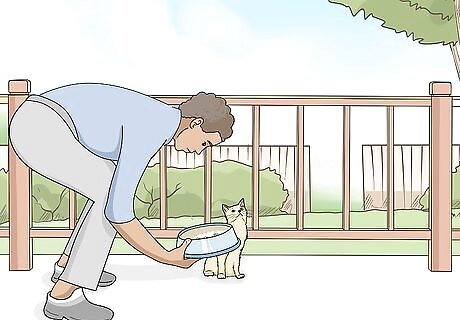
Remove pet food immediately. If your dog or cat eats outside, it is important to promptly get rid of the waste when your pet finishes eating and take the bowl inside overnight. Keeping a pet food bowl outside invites opossums right to your door, so keeping it inside is the best course of action. Feeding your pet outdoors at midday will ensure that opossums are asleep during the process.
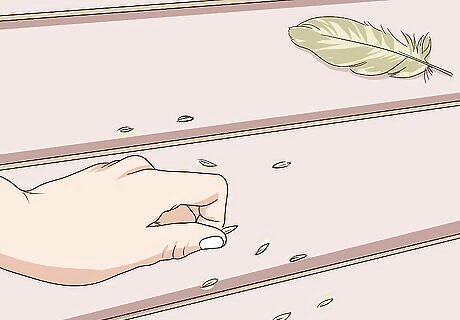
Pick up spilled birdseed. Having a bird feeder can be tricky with so many other critters seeking out an easy meal. Unlike squirrels, opossums are more likely to pick up the leftovers than use acrobatics to climb inside the feeder, so cleaning up spillage is an easy way to take out an attractive food source.
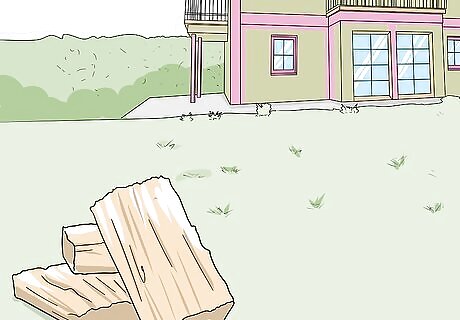
Keep firewood and logs away from your home. Like many wild creatures and pests, opossums sleep anywhere they can. If you have wood piles, logs, or stumps near your house, it is best to keep them at the edge of your yard or in a secure bin so that the animals do not take up residence in them.
Discouraging Opossums with Repellents
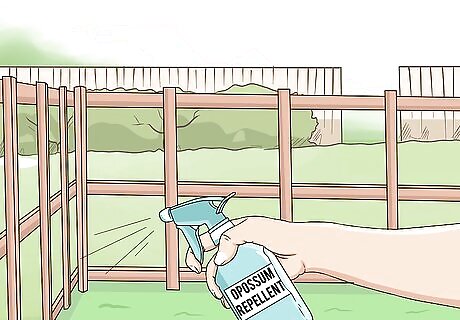
Spray commercial repellents at the edges of your yard. There are a number of opossum repellents available in garden and home supply stores, in both spray and solid form. If you use a spray, spritz trees and plants one or two times and respray every 3 to 4 days, as well as after heavy rains. Chemical sprays are typically a risk to your pets, so use caution when placing them if your pets spend unsupervised time in your yard. It is a good idea to test your spray on a small part of a plant first to see if it will harm the plant.
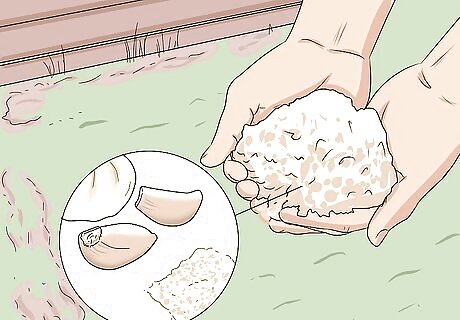
Use homemade repellents if commercial repellents are too strong. If you are concerned for your pets or the environment, try pulverizing cloves of garlic and spreading them around your yard as an alternative to store-bought opossum repellents. If opossums are eating from your garden, try mixing water, dish soap, and hot sauce and spraying the mixture onto your plants. The taste will encourage the animal to move on to a new food source.
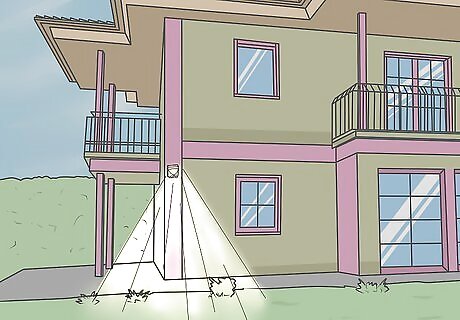
Use bright or flashing lights to repel opossums. Opossums are nocturnal, so bright lights can disrupt their sleep cycles and agitate them, forcing them to find another place to live. Motion activated lights will spook the animals if they approach your home at night. During the day, flashing Christmas lights may even keep them awake during their sleeping hours.
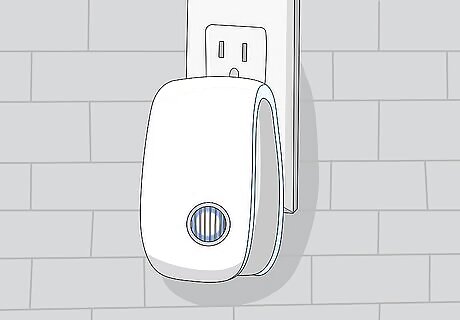
Use a device to emit repellent sounds. You can purchase a sonic repellent to drive opossums away, although the noise may frustrate and scare any pets you may have. These devices rely on high frequency sounds and vibrations that are inaudible to human ears.
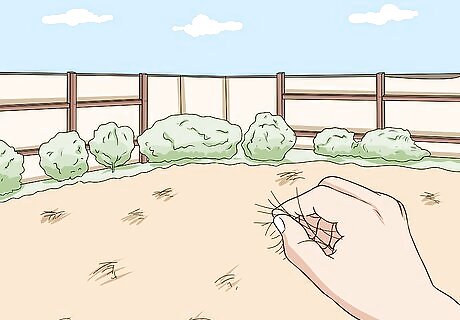
Spread pet fur around your yard. Opossums are likely to avoid potential conflicts, and pet fur makes for an easy way to scare off a possum due to their fear of cats and dogs. Pet fur is a better choice than keeping your pets outdoors due to the possibility of harm to your pet if they get into a conflict with an opossum.
Closing Possible Entry Points
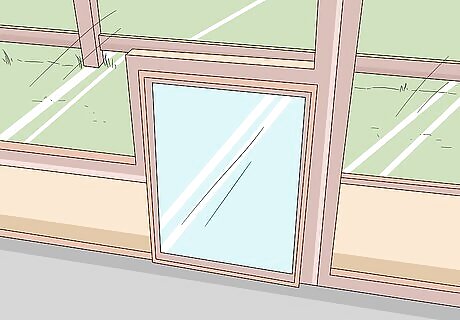
Secure or block pet doors. Unsecured pet doors are an easy way for opossums to enter your home even if they have simple levers, due to the species' opposable thumbs. A locked latch is far more likely to keep an opossum away from your home.
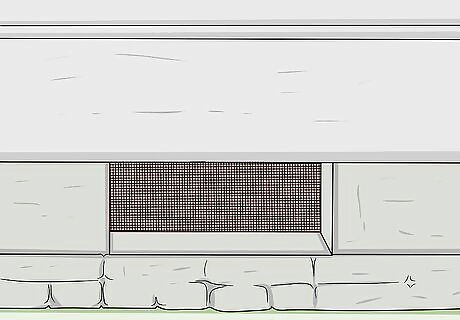
Use mesh to close off entry points to your home and yard. Attics, crawlspaces, and decks are all likely sites for opossum dens. You can use a wire mesh like hardware cloth to block off exposed openings to opossums, in addition to mice, rats, and other pests so long as it is ⁄4 inch (0.64 cm) wide or less. You can also use hardware cloth to fill in holes or gaps in your fence.
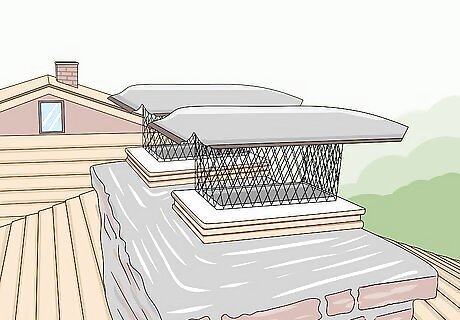
Secure your chimney with a pest-proof cap. If you have a fireplace, it is important to purchase a chimney cap specifically designed to keep pests out. A chimney cap allows you to use the fireplace while still protecting your home from opossums and the like. Building a chimney cap at home can be risky if you plan to use your fireplace, as it may trap smoke in your house.




















Comments
0 comment